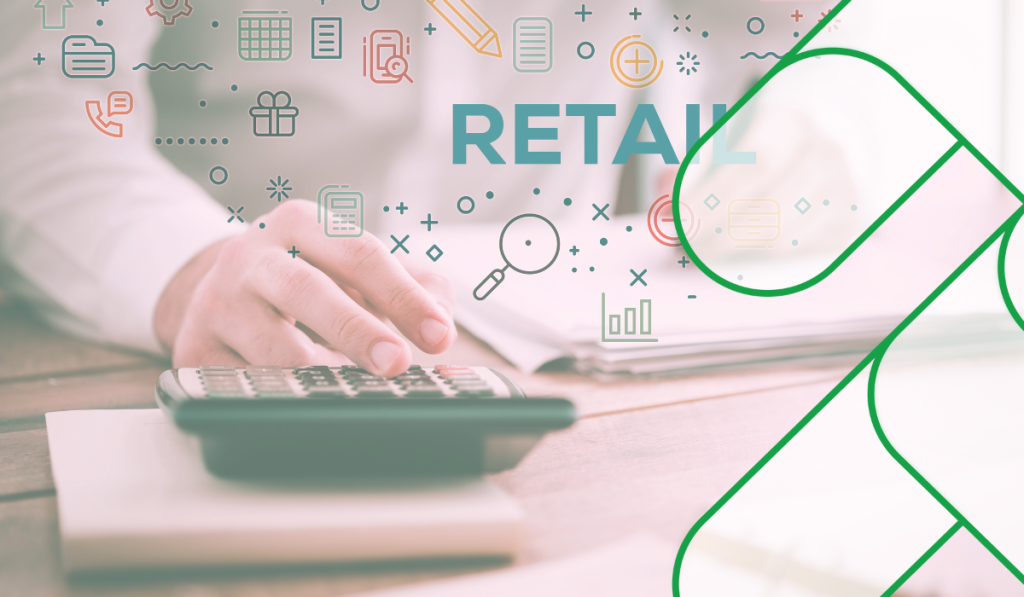
Omnichannel Retail: Technologies, Challenges, and Opportunities
This article explores omnichannel retail. It covers its advantages, the technology driving it, the implementation challenges companies face, and future trends.
According to Vision Research Reports, by 2032, the smart retail market is expected to reach around $ 390.5 billion. Several important issues highlighting the importance of retailers adjusting to shifting customer expectations and behaviors are driving the rise of the smart retail sector.
The primary driver is the growing need for customized purchasing experiences. Smart retail technologies facilitate the collection and analysis of data from multiple touchpoints, allowing businesses to customize offers, marketing campaigns, and product suggestions for specific customers. Increased sales and brand affinity are the ultimate results of this customization, improving consumer engagement, loyalty, and satisfaction.
This article is designed to provide a comprehensive overview of smart retail, exploring the technological innovations that underpin it, highlighting its benefits, and presenting guidance for retailers on adopting these advanced solutions.
“Smart retail” refers to the fusion of various technologies to forge a seamless and personalized shopping experience, merging the online and in-store realms. It’s more than just a technology. It’s an ecosystem that integrates hardware, software, and other technologies to collect and process data, which boosts sales and enhances customer satisfaction and operational effectiveness.
From cash registers and barcodes to eCommerce and now smart retail, the technology surrounding retail has been evolving continually.
As Internet of Things (IoT), Big Data, and Artificial Intelligence (AI) have matured, they have found applications in creating more interactive, personalized, and efficient retail environments.
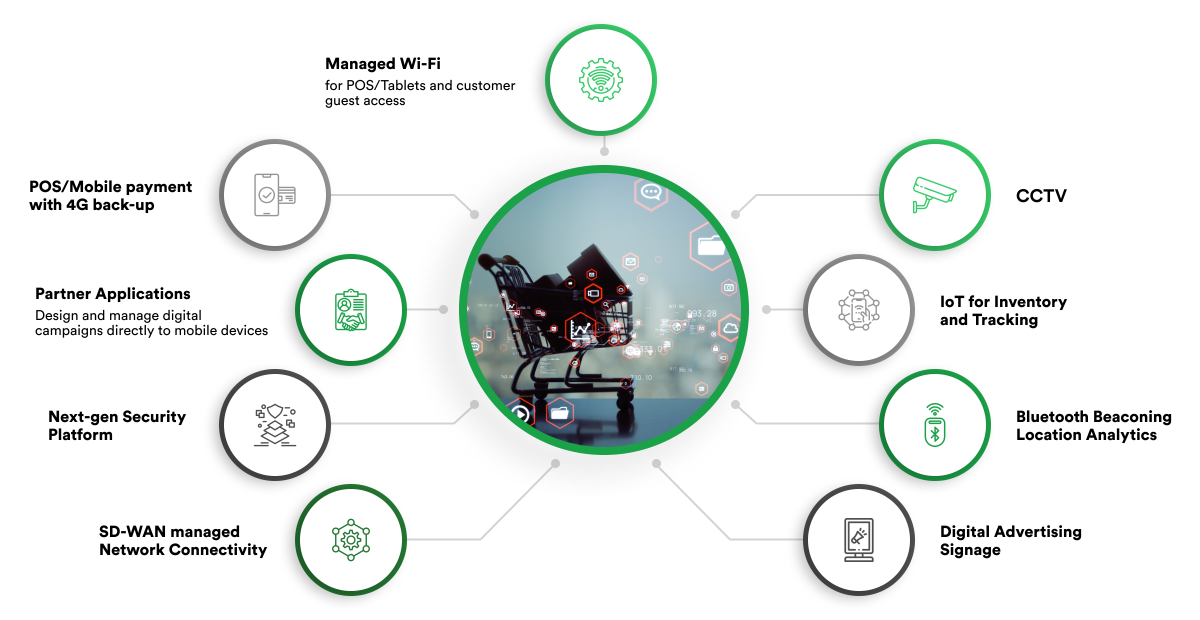
Smart Retail
Technological innovation is more than merely an option in today’s retail landscape. It is a necessity for staying competitive. As the industry undergoes rapid transformation, various technologies have emerged to redefine the retail experience for consumers and business owners.
Beacon technology, which uses Bluetooth Low Energy (BLE), has revolutionized how physical shops interact with customers. Beacons positioned strategically throughout the shop can deliver specific messages to customers’ smartphones, offering promotions, tailored advice, or in-store navigation. This improves the shopping experience for customers while also giving businesses useful information on how customers move about and interact with the store.
Retail inventory management has been completely transformed by smart shelves integrated with RFID tags, weight sensors, and other Internet of Things devices. They offer real-time stock level updates and automatically alert employees when refilling is necessary, so there’s no possibility of overstocking or understocking. These fundamental but essential tasks can be automated to free up employee time for other customer-focused operations.
Interactive kiosks serve as self-service touchpoints within retail stores, allowing customers to access a range of services, from checking product availability to accessing customer reviews. Not only do these kiosks offer convenience, but they also gather data that retailers can use to enhance customer experiences and streamline operations.
Augmented Reality overlays digital elements onto the real world through a smartphone or AR glasses, enhancing the consumer’s interaction with a product. In the retail setting, AR Retail Applications can offer virtual try-ons, showcase additional product information, and even navigate customers through stores. AR provides an interactive and information-rich environment for customers, bridging the gap between the convenience of online shopping and the tactile satisfaction of in-store retail.
When a technology company needed help to develop an AR mobile application to enhance the retail shopping experience, rinf.tech took on the challenge. With the help of cutting-edge technologies like machine learning and Intel’s OpenVINO library, app users can use their mobile cameras to identify products in stores. Due to the initiative’s great success, a unique robotic solution was developed, incorporating functions like real-time price comparisons and priority-based shopping lists.
Virtual Reality provides a more immersive experience compared to AR. VR can create a complete digital store replica, allowing customers to navigate store aisles, pick up products, and even check out, all in a virtual setting. This technology can benefit customers shopping from locations far from physical stores, offering them a ‘real’ shopping experience.
Electronic Shelf Labels are digital tags used in place of paper labels to display product pricing and information. They can be updated in real time via a wireless connection, making it easier to manage pricing strategies dynamically. They also free up employees to focus on more value-added tasks like customer service, as they no longer need to update each price tag manually.
Smart carts and baskets are embedded with technology that allows them to interact with the store’s system. Features can include a built-in barcode scanner for self-checkout, weight sensors for product recognition, and even a payment interface. These smart shopping companions enhance the customer experience by making the shopping process more efficient and streamlined.
Facial recognition technology in retail can be used for various applications—from personalizing in-store advertisements to enhancing store security. For instance, digital signs with facial recognition software can tailor advertisements according to the age and gender of the person looking at the screen. In addition to advertising and security applications, facial recognition technology can play a significant role in customer loyalty programs and personalized service.
In-store analytics solutions capture and analyze customer behavior in physical stores. These solutions can track customer movement, dwell time, and even gaze direction using cameras, WiFi tracking, and other sensors. Such data is invaluable for understanding customer preferences and optimizing store layout, among other things.
Beyond optimizing store layouts and understanding customer preferences, in-store analytics can also be integrated with other retail technologies for a more comprehensive approach to retail management.
Mobile Point of Sale (POS) systems are portable devices that perform the functions of a cash register. They can process payments anywhere in the store, reducing customer wait times. Additionally, they can be integrated with inventory management systems to provide real-time stock updates. In addition to facilitating quicker transactions and real-time inventory updates, Mobile POS systems also offer a platform for enriched customer interactions. Sales associates with mobile POS devices can access customer profiles, purchase histories, and preferences on the spot, allowing for more personalized service.
Radio Frequency Identification (RFID) tags are used for tracking products throughout the supply chain and within the store. They offer advantages over traditional barcodes, including the ability to read multiple tags simultaneously, making inventory management and checkout processes significantly more efficient. For example, a smart shelf equipped with RFID can immediately notify store managers if stock levels are low.
In retail, robotics has several applications, from customer service to inventory management. One notable example is ERIS by our scale-up Adapta Robotics, which can navigate store aisles, helping with on-shelf availability, price tag issues and even assist with inventory audits, automating repetitive tasks and improving operational efficiency.
Beyond their immediate functional roles, robots in retail settings are increasingly being designed to enhance the customer experience through interactive features. For example, some customer service robots are equipped with touchscreens and can offer store maps and product information or even guide customers to specific products within the store.
Cloud-based Closed-Circuit Television (Cloud CCTV) systems have come to the forefront as a revolutionary tool in smart retail. Unlike traditional CCTV systems that store data locally, Cloud CCTV leverages cloud storage solutions to provide a more flexible, scalable, and secure monitoring and data retention method. Retailers can access real-time video footage and historical data from anywhere, offering accessibility that traditional systems cannot match.
A leading consumer electronics manufacturer and retailer once faced significant challenges in customer segmentation, operational efficiency, and real-time responsiveness. They partnered with rinf.tech to address these issues and develop a cutting-edge solution. Real-time metrics like people counts and gender-age breakdowns are available on this dashboard.
As a result of our cooperation, the Customer gained the following benefits:
Mobile payment solutions enable customers to use their smartphones to make in-store purchases, adding a layer of convenience and speeding up the checkout process. This also allows retailers to integrate loyalty programs and offers directly into the payment process, encouraging repeat business.
Beyond simply expediting the payment process, mobile payment solutions offer retailers the opportunity to gather rich customer data that can be leveraged for future marketing efforts. With mobile payment apps, retailers can track individual purchase histories, frequency of store visits, and even specific product preferences. This data can personalize marketing communications, offer time-sensitive promotions, or provide individualized incentives to encourage further engagement.
Biometric verification methods, such as fingerprint or retina scans, are being implemented to enhance security for access control and payment verification. This offers a secure and personalized shopping experience for customers.
In addition to bolstering security and providing a more personalized experience, biometric verification can streamline various aspects of the customer’s journey. For instance, biometric identifiers can authenticate loyalty program memberships, eliminating customers needing to carry physical cards or remember membership numbers.
Contactless payments use Near Field Communication (NFC) technology to enable secure and fast transactions without requiring physical contact between the payment card and the reader. During the COVID-19 pandemic, the adoption of this technology saw a significant increase and is expected to remain popular.
Some retailers are also integrating contactless payments with mobile apps to offer an even more seamless shopping experience, allowing customers to manage lists, receive personalized recommendations, and complete transactions from their smartphones. As this technology matures, it will likely become a key component in the omnichannel retail experience, bridging the gap between online and in-store shopping.
IoT devices, like sensors, beacons, and smart shelves, create a connected ecosystem within the retail environment. These devices gather data that can be analyzed to provide actionable insights, from customer behavior to inventory levels.
Beyond analytics and data gathering, the Internet of Things (IoT) can also facilitate real-time actions and automated responses within the retail environment. For example, smart sensors can detect when perishable items are nearing expiration dates and automatically mark them for promotions or removal.
The advent of 5G technology promises faster and more reliable data transfer, critical for the seamless functioning of connected devices in a smart retail setting. From quick payment processing to real-time analytics, 5G will significantly enhance the smart retail experience.
Additionally, 5G can enable more robust machine-to-machine communications, facilitating the use of more complex algorithms for analytics and automation. This technological leap raises the bar for customer engagement. It allows retailers to harness data more nuanced and effectively, thereby driving innovation in retail business models and customer interactions.
Edge computing refers to processing data closer to its source, like IoT devices in a retail store. This ensures faster data processing and real-time insights, which are critical for real-time inventory management and personalized customer engagement.
In addition to enabling real-time insights and faster data processing, edge computing also offers significant benefits in terms of security and compliance. By processing data locally, retailers can better control where sensitive information is stored and who has access to it, thereby reducing the risk of data breaches and ensuring better compliance with data protection regulations.
Adopting smart retail technologies is about more than keeping pace with industry trends. It has tangible, measurable benefits that can transform how retailers operate and interact with customers. As these innovative solutions become more integrated into the retail ecosystem, they serve as powerful tools for enhancing various aspects of the business.
Smart retail technologies like augmented reality, personalized recommendations, and interactive kiosks provide customers with a unique and engaging shopping experience. These tools enable a seamless and convenient journey from product discovery to purchase. For instance, augmented reality applications can allow customers to virtually try on clothing or visualize how furniture would look in their homes. By elevating the in-store experience, retailers can create a more meaningful interaction with customers, increasing brand loyalty and customer retention.
Automation of inventory management, checkout processes, and other in-store tasks significantly reduces manual effort. Technologies like smart shelves, RFID, and mobile POS systems can minimize errors and improve the overall efficiency of store operations. For example, smart shelves with weight sensors can automatically alert staff when restocking is needed, eliminating manual inventory checks. This results in a more streamlined operation, enabling employees to focus on customer-centric tasks.
Integrating analytics and in-store sensors provides retailers with valuable data on customer behavior, inventory levels, and overall store performance. For instance, heat maps can show areas of the store where customers spend the most time, enabling better product placement. These insights enable informed decision-making and allow retailers to optimize store layouts, thus improving both customer experience and operational efficiency.
Personalized shopping experiences, enabled by technologies like facial recognition and data analytics, make it easier to tailor marketing strategies to individual customer preferences. Smart retail solutions ultimately drive sales and increase revenue by attracting and retaining customers more effectively. Whether through targeted promotions or personalized recommendations, smart retail technologies offer new avenues for upselling and cross-selling products.
Technologies like RFID and smart shelves offer real-time visibility into inventory levels. This allows retailers to maintain optimal stock levels, reduce carrying costs, and minimize the risk of stockouts or overstock. In addition, real-time data can be used for predictive analytics, helping retailers understand purchasing trends and make more accurate inventory orders in advance.
Surveillance systems, smart alarms, and anti-theft devices significantly enhance the security aspect of retail operations. Cloud-based CCTV solutions enable remote monitoring, while facial recognition systems can identify known shoplifters as they enter the store. These technologies work together to protect store premises, safeguard assets, and reduce financial losses due to theft or fraud.
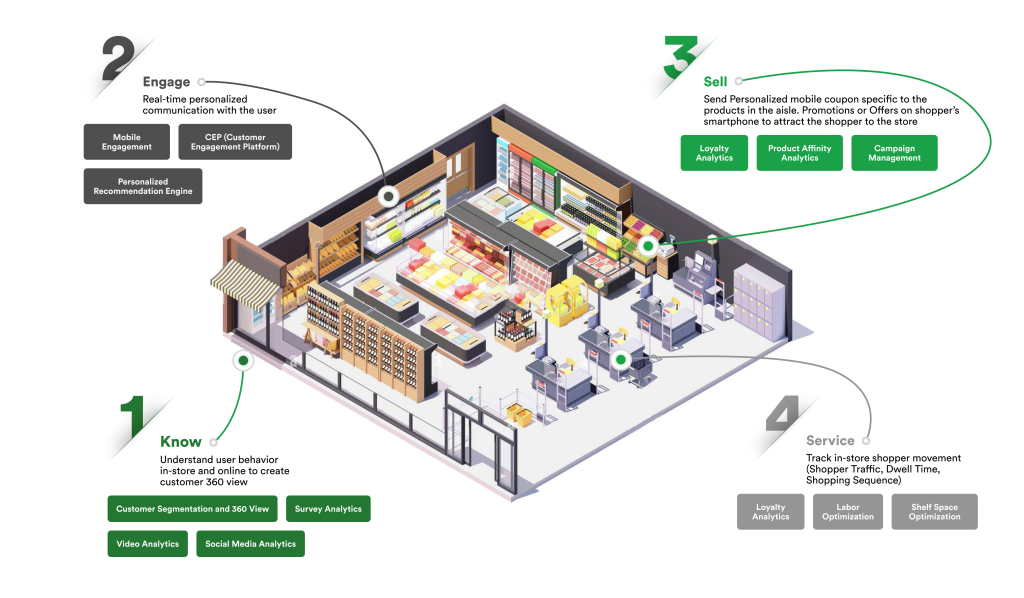
The journey toward smart retail is not merely about adopting individual technologies. It’s about integrating a suite of solutions that work in concert to transform the entire retail operation. However, making this transition successfully requires thoughtful planning, strategic decision-making, and effective execution.
Before embarking on a smart retail journey, conducting an initial assessment is crucial to identify areas that could benefit from modernization. This involves auditing current systems, workflow processes, and customer engagement strategies to understand where inefficiencies lie. Subsequently, an analysis should be carried out to estimate the potential Return on Investment (ROI) of implementing smart retail technologies. This provides a quantifiable basis for decision-making.
Creating a detailed roadmap is the next pivotal step. This should outline the technologies to be adopted, the scale and timeline of the implementation, and the budget constraints. It’s also beneficial to conduct pilot tests for selected technologies to evaluate their real-world performance and ease of integration. This initial planning phase is instrumental in setting the stage for a successful transformation.
Selecting appropriate software and hardware is a critical factor in successfully implementing smart retail solutions. Companies should evaluate technologies based on their needs, scalability, and compatibility with existing systems. It’s often advisable to start with modular solutions that can be easily upgraded or expanded in the future.
Equally important is the choice of a reliable development partner. Whether you’re looking for an end-to-end solution or specific components like smart shelves or analytics software, partnering with a reputable technology integration provider ensures quality and reliability. Look for partners with proven expertise in the retail industry and a robust R&D Center for Embedded Development/IoT. They can provide valuable insights into best practices and common pitfalls to avoid.
Once the technologies and partners have been selected, the focus shifts to integration. This involves not just technical integration with existing systems but also the process of re-engineering to make the most of the new capabilities. Best practices recommend phased implementations, where a subset of features is rolled out initially, followed by more complex functionalities. This allows for real-time adjustments and helps in managing the change more effectively.
The human element of technology adoption should be noticed. Employees must be adequately trained to interact with the new systems and technologies. This could range from simple operational instructions for smart shelves to more complex customer engagement strategies using augmented Reality or facial recognition. Change management strategies should be put in place to address any resistance and to ensure a smooth transition.
As we look beyond the present landscape, it’s clear that the future of retail is not just smart but increasingly complex, driven by continuous technological innovation. The retail space is destined for transformative change, with emerging technologies offering unprecedented capabilities to retailers and consumers.
AI and machine learning are rapidly becoming ubiquitous in the retail sector, aiding in everything from personalized recommendations to predictive analytics for inventory management. These technologies can analyze vast data sets to provide actionable insights that human analysts might overlook. AI in customer service, mainly through chatbots, can automate routine inquiries, freeing human employees for more complex customer needs. With the continuous advancement in AI and machine learning algorithms, the role of these technologies in retail is expected to expand significantly.
The integration of voice-activated assistants like Alexa, Siri, and Google Assistant into the retail experience is rising. These technologies allow customers to shop, check product availability, and purchase using voice commands. As voice recognition technology becomes more sophisticated, it will enable more seamless and personalized shopping experiences, further blurring the lines between online and offline retail.
Blockchain technology offers the potential for unprecedented transparency in supply chain management. Blockchain can verify product authenticity and origin by recording every transaction or movement in an unchangeable ledger, thereby improving customer trust. This is particularly beneficial in industries where provenance is critical, such as pharmaceuticals and luxury goods.
Automation is set to extend beyond inventory and customer service to include a broader range of operational tasks. Robotic Process Automation can handle repetitive, rule-based tasks like data entry, freeing employees for more strategic activities. As RPA technologies become more advanced, they will incorporate machine learning algorithms to handle more complex tasks, increasing operational efficiency.
While AR and VR are already used for virtual try-ons and store navigation, future applications will offer even more immersive experiences. Imagine virtual shopping trips that mimic the in-store experience so closely that customers can almost feel the fabric of a garment or smell the perfume they are considering buying. These technologies will redefine what it means to have an engaging customer experience.
IoT devices increasingly integrate into retail environments, enabling more intelligent, responsive stores. From smart shelves that automatically reorder products to sensors that adjust lighting and temperature based on foot traffic, IoT technologies allow for a more dynamic and adaptive retail space.
Biometric technologies like facial recognition and fingerprint scanning are expected to become more prevalent, offering enhanced security and a more personalized shopping experience. These technologies could identify loyalty program members as they enter the store, triggering personalized promotions or even allowing for frictionless, cashier-less checkout experiences.
The rise of NFC technology and mobile wallets makes transactions quicker and more secure. As these technologies gain global acceptance, we can expect even faster and more convenient payment options to emerge.
The rollout of 5G networks will significantly enhance the capabilities of all connected devices in a retail environment. Faster and more reliable connectivity will enable more robust data analytics, smoother AR/VR experiences, and more efficient operational processes.
As sustainability becomes a more significant focus for consumers, retailers turn to technology to reduce their environmental impact. From energy-efficient lighting and cooling systems to platforms that facilitate easy recycling of products, sustainable technologies are likely to become an integral part of the retail landscape.
With increasing customer data being collected, robust security measures will be crucial. Advanced encryption methods and secure data storage solutions will become standard to protect against data breaches and ensure customer privacy.
As real-time analytics and personalized customer experiences become more important, edge computing will play a critical role. By processing data closer to its source, retailers can obtain insights and act quickly, improving customer service and operational efficiency.
Integrating e-commerce capabilities into social media platforms allows for a seamless transition from product discovery to purchase, all without leaving the app. Given the time people spend on social media, this represents a significant new sales channel for retailers.
The blending of physical and digital retail—known as “phygital”—is likely to become more sophisticated. Imagine browsing in a physical store while accessing reviews, video demos, and personalized recommendations through augmented reality on your smartphone.
Using machine learning algorithms, retailers can adjust prices in real-time based on various factors like demand, inventory levels, and even individual customer behavior. This dynamic pricing model allows retailers to maximize revenue and improve customer satisfaction.
Popularized in Asia, live video shopping experiences are expected to gain traction globally. These livestreams offer the interactive experience of in-store shopping from the comfort of one’s home, with real-time Q&A and immediate purchasing capabilities.
The retail landscape is undergoing a transformative shift, driven by technological advancements fundamentally changing the way consumers shop and interact with retail spaces. Integrating smart retail solutions isn’t merely an optional upgrade but a strategic necessity for retailers aiming for long-term sustainability and competitive differentiation.
As we look towards the future, artificial intelligence, voice-activated commerce, and advanced analytics are set to refine further and revolutionize the retail industry. Given the rapid technological evolution, retailers must remain agile, continually assessing, adopting, and integrating new solutions that align with operational needs and consumer expectations.
Therefore, as we stand on the brink of this new era in retail, businesses must be willing to invest, innovate, and evolve. The partnership with an experienced custom retail tech solutions provider can be a critical success factor in navigating this complex but rewarding journey. Now is the time for retailers to embrace the smart retail revolution, capitalizing on the myriad opportunities it offers for enhancing customer engagement, optimizing operations, and securing a competitive advantage in an increasingly digitalized world.

This article explores omnichannel retail. It covers its advantages, the technology driving it, the implementation challenges companies face, and future trends.
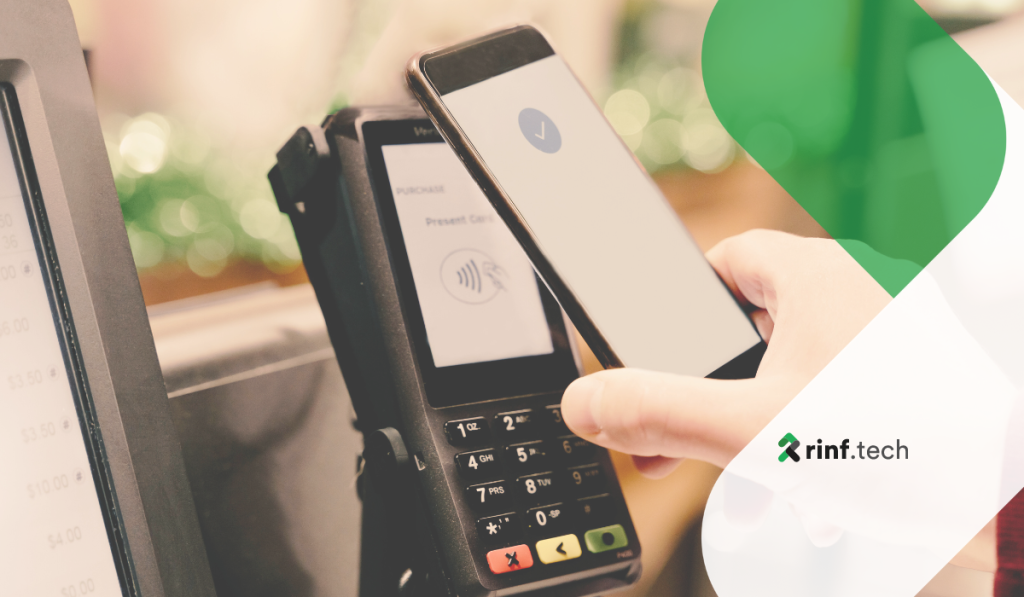
A comprehensive overview of how fintech innovations drive significant changes in the retail industry.
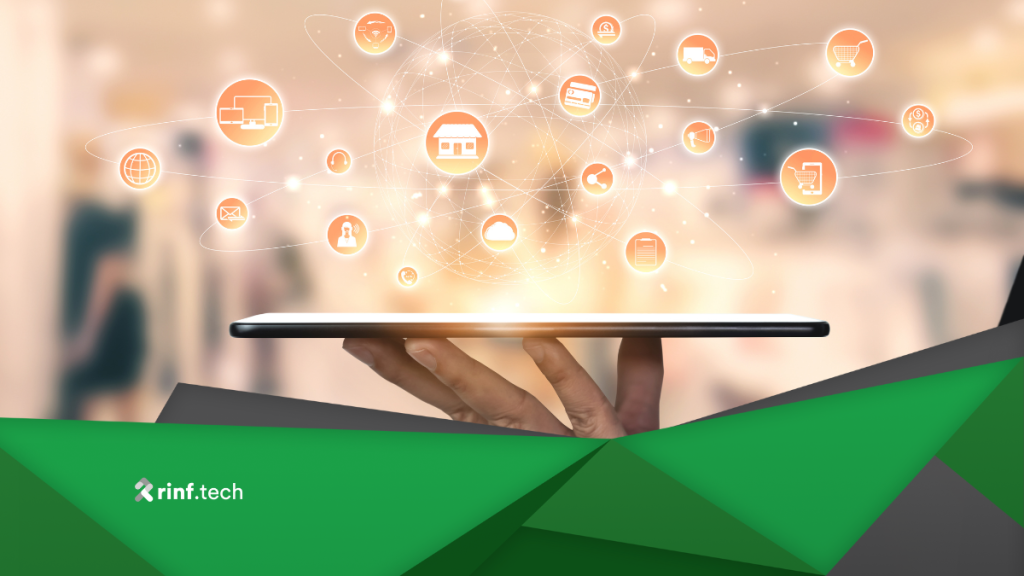
In this article, we explore a current retail technology landscape and trends shaping the industry, retail tech use cases, as well as what the future holds for retail tech.
Copyright © 2023 rinf.tech. All Rights Reserved.
Terms & Conditions. Cookie Policy. Privacy Policy.
Politica Avertizari de Integritate (RO)